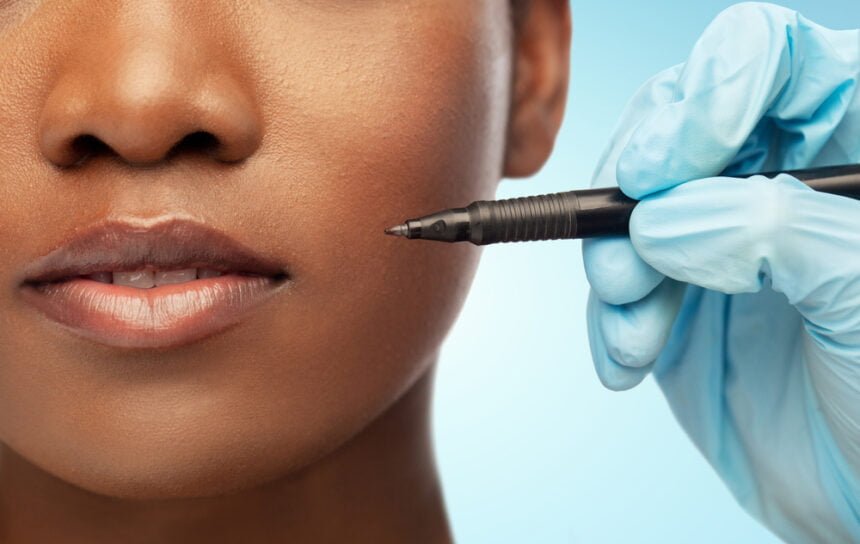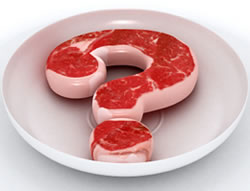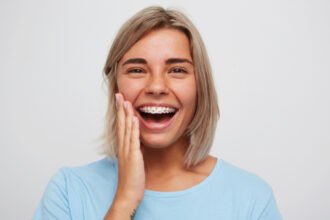As of 2020, African Americans constitute a staggering 11% of the ethnic population seeking cosmetic procedures in the United States. The field of plastic surgery is constantly changing, especially when it comes to meeting the needs of patients from different ethnic backgrounds.
One of the biggest markets for cosmetic procedures is dermal fillers. By 2031, the market size for dermal fillers is projected to be worth over $3.1 billion.
Dermal fillers in African Americans and other ethnic groups have become increasingly popular as aesthetic procedures gained more acceptance. With technological advancements and affordability, more people from diverse ethnic groups can experience the transformative effects of these procedures. While each ethnic group has unique features they want to preserve, they share a common goal of combating aging and achieving facial or body symmetry.
Discover top-tier medical injectables and supplies at Medica Depot – your go-to source for authentic, cost-effective dermal fillers and more. Elevate your medical business with our guaranteed lowest prices, VIP customer service, and a commitment to quality. As the creators of this article, we bring you valuable insights.
Age Changes in African American Individuals
African Americans have distinct characteristics that set them apart from other racial and ethnic groups. Knowing these variations is vital to ensure effective cosmetic procedures and cater to the specific needs of this demographic.
Structural and Anatomical Differences:
- Sunken nasal root.
- Small nasal spine.
- The chin is squared or well-defined.
- Bimaxillary protrusion.
- Rounded upper eye ridges (supraorbital margins)
- Lines around the temples.
- Increased lip prominence.
- Greater facial convexity.
- Underdeveloped cheekbones (less pronounced malar eminence)
- Increased soft tissue in the midface region.
- Ocular Proptosis, which contributes to the presence of infraorbital shadowing.
How age changes in African Americans manifest differently than in other skin types:
- Midface Volume Loss: With aging, the malar fat pads in African Americans tend to descend towards the nasolabial folds, leading to lengthening of the lower eyelids, more pronounced nasolabial folds, and accentuated nasal jugal folds. This results in a double convexity of the midface, a characteristic aging change in this population.
- Dermatochalasis of the Upper Lid: Loss of skin elasticity and the effects of gravity contribute to sagging skin in the upper eyelid area, often leading to droopy eyelids.
- Photoaging: Photoaging is premature skin aging due to prolonged exposure to sunlight or artificial UV sources. It causes wrinkles, reduced elasticity, pigmentation changes, sunspots, and redness. Skin pigmentation significantly influences the effects of photoaging across different ethnicities. African Americans experience photoaging later in life, mainly in individuals with lighter complexions. However, individuals with darker skin tones tend to experience more pronounced and visible dermatological aging signs at a more advanced age.
In addition to the signs above, Dermatosis Papulosa Nigra (DPN) is a benign skin condition that primarily affects individuals with darker skin types. Multiple small dark papules on the face characterize this condition. While generally harmless, it is a sign of aging due to chronic sun exposure and can be a cosmetic concern for some individuals.
What Makes the African-American Skin Unique?
| Features | Observations |
| Pigmentation | |
| Fitzpatrick Scale | IV-VI |
| Melanosomes | NumerousLarger in size and spread out more. Stage IV melanosomes present.Slower degradation.Type V/VI skin has a neutral pH in intracellular melanocytes. |
| Melanosome morphology | Oval, large, and dense. |
| Type of melanin | Eumelanin |
| Collagen | Tightly-packed structure surrounded by proteoglycans in the dermis, and is highly reactive. |
| Thickness of Epidermis | Extra layers of cells. |
| Differences in Photoaging | |
| Pigmentation and aging | Signs of aging appear at an advanced age compared to lighter-pigmented individuals. |
| Stratum Corneum Biology | |
| TEWL (Transepidermal Water Loss), Water Content, SC Lipids | Weaker barrier initially, but stronger after further tape stripping; increased sebum secretion |
| Skin barrier differences | Higher cohesiveness; reduced potential to irritate with certain stimuli. |
| Ceramide Levels | Lower ceramide levels compared to Caucasians and Asians. |
| Natural Moisturizing Factor (NMF) | Lower NMF levels compared to Caucasians and Asians. |
Aesthetic Concerns to Consider
A wide range of aesthetic concerns exist among African American patients. While embracing a variety of skin tones, hyperpigmentation problems such as dark spots and post-inflammatory hyperpigmentation (PIH) are often the primary concern. In addition, scars, especially keloids, can be a concern, leading to a desire for smoother and more even skin. Additionally, hair plays a significant role, with concerns such as texture, thinning, or desiring a precise hairline often coming into focus.
Best Fillers for African American Skin
Achieving the best results with dermal fillers and injectables for African American skin requires a tailored approach that considers various factors. For individuals seeking longer-lasting results, RADIESSE®7, the calcium hydroxylapatite filler, is preferred due to its ability to stimulate collagen production. Administering RADIESSE® on African American skin can effectively address concerns like lipoatrophy and moderate to severe facial wrinkles, including nasolabial folds. Additionally, it is effective in addressing marionette lines, glabella folds, pre-jowl sulcus, cheek volume loss, dorsal nasal deformities, and lip augmentation.
Additionally, hyaluronic acid (HA) fillers, such as RESTYLANE® and JUVÉDERM®, offer a range of FDA-approved indications and off-label applications within this demographic. JUVÉDERM® formulations include Vollure, Ultra, Ultra Plus, Voluma, and Volbella. These fillers can effectively target moderate to severe facial wrinkles, such as nasolabial folds, deep cheek injections to counteract age-related volume loss, and specific use in lip augmentation. Moreover, it can improve age-related, post-surgical, and pathology-induced facial depressions, rhytids, and volumetric deficits across multiple anatomical regions, making it a comprehensive approach to aesthetic enhancement for individuals with darker skin tones.
With the use of injectables in African Americans like BOTOX®, it’s crucial to adopt a meticulous strategy to maintain natural facial expressions, especially among individuals with denser skin textures. However, to achieve optimal outcomes, it is important to consider factors including facial structure, musculature, skin histology, and sociocultural considerations.
When planning injectable treatments and face fillers for African American patients, it’s vital to note that BOTOX® treatment should be arranged approximately two weeks before filler application. Doing so will initially help evaluate issues, such as static lines and deep folds, and these can subsequently be treated with hyaluronic acid fillers.
While the safety and efficacy of BOTOX® and dermal fillers are comparable in whites and other ethnicities, ongoing research and scrutiny are necessary, especially with new fillers entering the market. These efforts aim to maximize treatment benefits for all patients.
Injection Techniques and Practices for African American Patients
Clinicians may be hesitant to offer a full range of aesthetic treatments to patients with skin of color due to a lack of clear guidelines and recommendations specific to different populations. This is why dermatologists or cosmetic surgeons must adopt a multifaceted approach when treating patients of varying skin tones. It’s more than merely administering treatments; it involves customizing procedures and averting potential complications.
Listed below is a general guideline on the different approaches adopted:
| Facial Area | Injection Sites | Technique | Recommended Fillers |
| Upper Face | Forehead,Anterior Temporal Fossa, Brow & Glabellar Complex | Customized treatment based on individual line patterns and assessment for ptosis before treating the frontalis. Anterior temple superior to the zygomatic arch, avoiding direct brow injection. Entry point: 1 cm medial to temporal fusion line, 1 cm inferior to hairline. Consider variations in anatomy for brow & glabellar complex. These patients may require more toxin than expected. | 20 mg/mL Vycross HA gel filler (JUVÉDERM® Voluma) diluted 1:1 with saline. |
| Midface & Infraorbital Area | Posterior Temporal Fossa,Sub-Orbicularis Oculi Fat,Cheek, Prezygomatic Space, Tear Trough | Prioritize midface injections before tear trough. Cheek injections for volume augmentation. Prezygomatic space injections for indirect lift to orbital tissue. Tear trough injections: Cannula injections avoiding angular artery. | Cohesive polydensified matrix gel (CPM; Belotero®) for tear trough. 20 mg/mL Vycross gel (JUVÉDERM® Voluma) for cheek and pre zygomatic space. External monopolar radiofrequency treatment for thin skin around the eyes. |
| Lower Third | Submental Area, Jawline, Chin | Submental fat management before jawline support with fillers. Jawline and chin contouring with HA fillers, avoiding facial artery. Consideration of chin projection respecting natural aesthetics. | 25 mg/mL Vycross gel (JUVÉDERM® Volux) Or Calcium hydroxylapatite (RADIESSE®) for jawline and chin. |
| Lips | Upper Lip, Lower Lip, Labiomandibular Fat Pad | Upper lip treatment for volume loss. Lower lip treatment for structural support. Injection over labiomandibular fat pad for a youthful appearance. | Depending on the need for volume restoration or augmentation: 25 mg/mL Vycross gel (JUVÉDERM® Volux) or hyaluronic acid fillers. BoNT-A co-treatment with filler for lower face and platysma relaxation. |
Clinicians should endeavor to educate and stay informed about unique needs, fostering an environment where everyone feels confident and comfortable in their skin.
Safety Considerations and Adverse Events
Being aware of the safety considerations associated with dermal fillers is essential. These injectable substances can cause temporary or permanent side effects, some of which may occur immediately after the procedure, while others may surface much later post-injection.
The associated compilations include:
- Allergic reactions to filler components.
- Common side effects, including bruising, redness, swelling, pain, tenderness, itching, and rash.
- Limitations in performing activities when injected into the back of the hand.
- Localized inflammation triggered by other stimuli.
- Nodules or granulomas
Rare occurrences:
- Severe allergic reactions,
- Migration of filler material,
- Leakage or rupture of the filler,
- Formation of permanent hard nodules,
- Injury due to unintended vessel injection leading to necrosis, visual impairments, or stroke, and, in extreme cases, fatality.
While dermal fillers are generally safe, African American patients may experience adverse effects such as hyperpigmentation due to quick injections and multiple punctures. The risk of keloidal scarring is rare and can be reduced by administering subdermal injections.
Conclusion
Skin of color patients may feel underserved if healthcare providers are not informed about their specific needs, impacting their satisfaction with treatment. Using dermal fillers in African American patients needs a subtle understanding beyond the standard textbook. Recognizing patient expectations, anatomical variations, and unique aging patterns and personalizing treatment are the cornerstones of successful outcomes.
While the demographic shifts bring new opportunities, they also necessitate ongoing research and education for practitioners. By embracing individualization and tailoring our approach to each patient’s unique facial anatomy, we can ensure that their journey toward facial rejuvenation is a fulfilling and transformative one.
FAQs
- What are the best dermal fillers and injectables for dark skin?
Several dermal fillers have shown effectiveness in treating dark skin tones. JUVÉDERM® and RADIESSE® rank among the leading choices in cosmetic procedures, offering a wide range of products designed for diverse cosmetic needs. Voluma® and RESTYLANE® are recommended options for sagging skin issues. BOTOX®, too, enhances the appearance of individuals with darker skin tones. Additionally, injectable dermal fillers, primarily those based on hyaluronic acid, effectively restore facial fullness and volume, resulting in a visibly more youthful and refreshed appearance for darker skin tones.
- Are JUVÉDERM® or RESTYLANE® effective in African American patients?
Yes, JUVÉDERM® and RESTYLANE® can be effective in African American patients when administered by experienced professionals. These versatile hyaluronic acid-based fillers can address various concerns, including lip augmentation, smoothing fine lines, and adding volume to facial areas. However, the effectiveness may vary based on individual skin characteristics, it is highly recommended to consult with a reputed dermatologist to determine the best treatment option for individual patient needs.
- Who should avoid getting dermal fillers?
Although rare, using dermal fillers can pose certain risks. To mitigate these, comprehensive patient evaluations are conducted to identify vulnerable candidates, such as
- Any active skin, localized, or generalized infections
- History of allergic reactions to filler components.
- Active collagenoses, including morphea, mixed connective tissue disease, systemic lupus, etc.
- Autoimmune disorders
- Pregnant or breastfeeding women.
- Patients expecting drastic or unnatural changes.
In addition, certain situations may require postponing the dermal filler procedure until the condition resolves.










